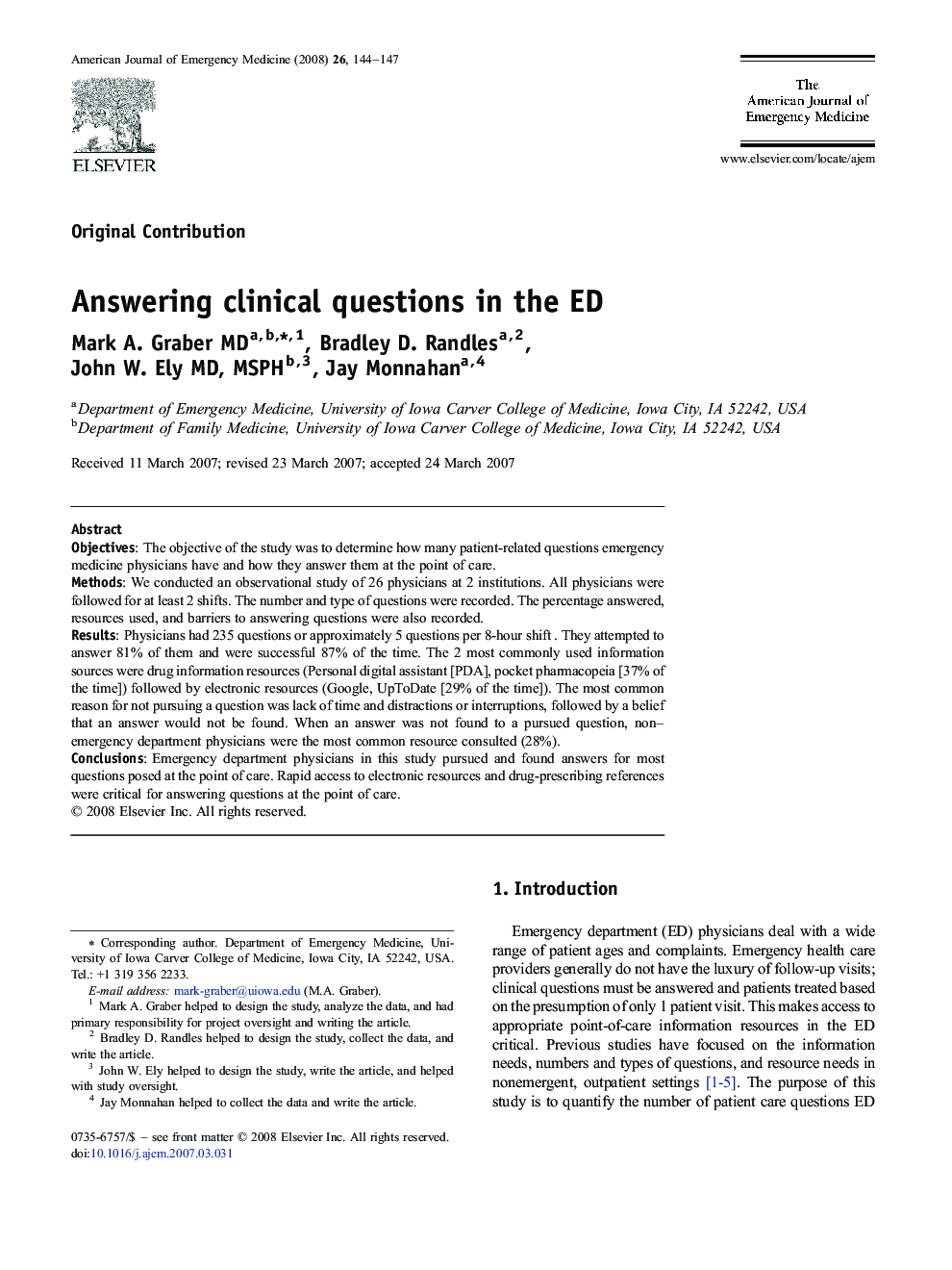| کد مقاله | کد نشریه | سال انتشار | مقاله انگلیسی | نسخه تمام متن |
|---|---|---|---|---|
| 3227779 | 1588179 | 2008 | 4 صفحه PDF | دانلود رایگان |

ObjectivesThe objective of the study was to determine how many patient-related questions emergency medicine physicians have and how they answer them at the point of care.MethodsWe conducted an observational study of 26 physicians at 2 institutions. All physicians were followed for at least 2 shifts. The number and type of questions were recorded. The percentage answered, resources used, and barriers to answering questions were also recorded.ResultsPhysicians had 235 questions or approximately 5 questions per 8-hour shift . They attempted to answer 81% of them and were successful 87% of the time. The 2 most commonly used information sources were drug information resources (Personal digital assistant [PDA], pocket pharmacopeia [37% of the time]) followed by electronic resources (Google, UpToDate [29% of the time]). The most common reason for not pursuing a question was lack of time and distractions or interruptions, followed by a belief that an answer would not be found. When an answer was not found to a pursued question, non–emergency department physicians were the most common resource consulted (28%).ConclusionsEmergency department physicians in this study pursued and found answers for most questions posed at the point of care. Rapid access to electronic resources and drug-prescribing references were critical for answering questions at the point of care.
Journal: The American Journal of Emergency Medicine - Volume 26, Issue 2, February 2008, Pages 144–147